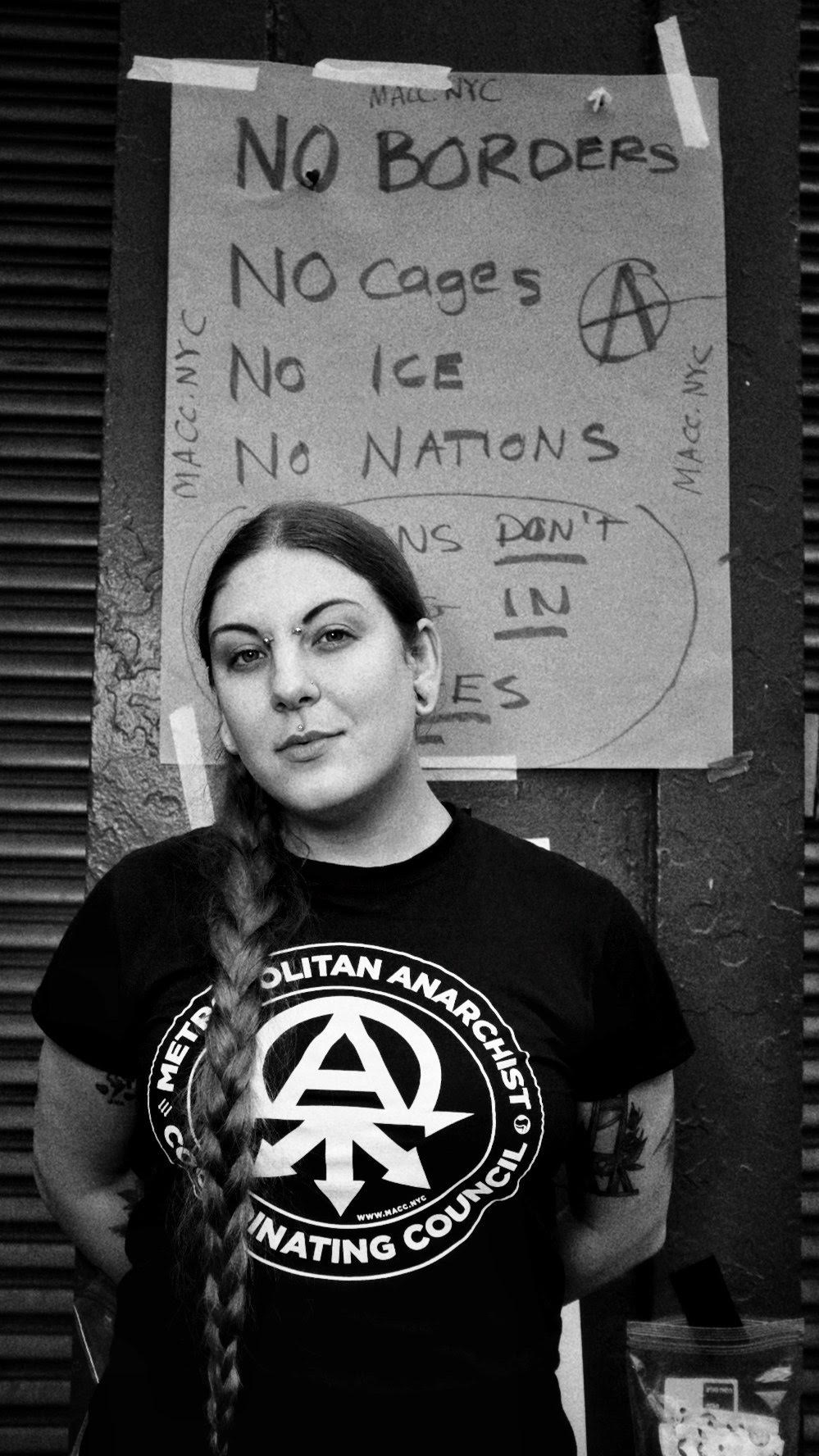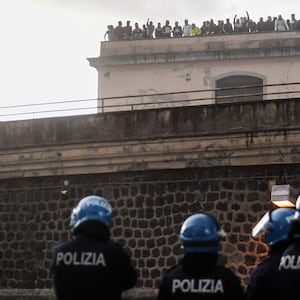If New York City has a plague year, there’s a plan for its prisoners—not to protect them from infection in their tight quarters, but to use convicts to make New York State branded hand sanitizers and, if it comes to that, prisoners at Rikers to bury the dead.
Gov. Andrew Cuomo Monday, citing concerns about profiteers selling overpriced hand sanitizer, announced that CorCraft, a company that uses New York State prison labor paid between 16¢ and $1.14 an hour, would be making 100,000 gallons a week of NY-branded hand sanitizer.
In the city, the Pandemic Influenza Surge Plan For Managing In- and Out-of-Hospital Deaths that the New York City Office of Chief Medical Examiner released in 2008 details worst-case plans for a mass infection and what would happen if the bodies started piling up. If the city’s beefed-up cadaver storage and cremation facilities were overwhelmed, bodies will be ferried over to Hart Island, a desolate spit of land off the coast of the Bronx in Long Island Sound that functions as the city’s public cemetery. Prisoners from nearby Rikers Island will be brought in to dig graves for the corpses of the stricken.
ADVERTISEMENT
If the specter of enslaved gravediggers burying coronavirus victims on a cursed island sounds like Dickensian nightmare fuel, that’s because it is—and yet it’s something that’s been happening for hundreds of years. The Department of Correction cheerfully notes that the taxpayer-funded City Cemetery on Hart Island is the city’s official public cemetery, and that, for over 150 years, the DOC has been charged with “managing” the island’s burials. In plain terms, incarcerated people have been digging those lonely graves since four years after the Civil War ended.
Like Madison Square Park, Washington Square Park, Bryant Park, and Randall’s Island before it, Hart Island has long functioned as a potter’s field, an end-of-the-line mass grave site for those who could not afford a more dignified funeral. The island has worn many guises throughout its long, dark history—it has been an army training camp, a tuberculosis hospital, an addiction rehabilitation facility—but now, it’s best known as a city of the dead. Over one million people are buried there, and the vast majority of them were poor, or homeless. During the 1980s and 90s, victims of the AIDS crisis were sent there. The graves are unmarked, and many of the cemetery’s residents are unclaimed, a decaying sea of John and Jane Does. Thousands of stillborn babies sleep there beneath sheets of earth; as the Baffler notes, about 21 percent of the burials on the island each year are fetal remains. According to the 2008 OCME report, approximately 30 percent of people who die in New York City end up on Hart Island, and the 20-25 bodies per week are buried by prison laborers, who are paid a mere $1 per hour for their morbid work. The bodies are not embalmed, and nestle into plain pinewood boxes. The dead are then laid into trenches, three coffins deep, by those who are still living but damned under the U.S. legal system.
A 2019 New York City Council vote transferred jurisdiction from the DOC over to the Parks and Recreation department in an effort to make it easier for families of the deceased to visit (or track down) their loved ones, but will continue to be operated by the DOC until burials are moved to a new site. Rikers itself is also closing, eventually; the current timeline has it projected to shut down completely in 2026. For now, the Hart Island plan remains enshrined in the OCME’s guidelines. If COVID-19 brings the worst to New York City, its vulnerable incarcerated population will be forced out onto the front lines to deal with its unembalmed victims (which opens up the prisoners to the risk of infection) in cheap, flimsy coffins.
Details on what kind of plans the city’s Department of Corrections have in place to protect the prisoners are much scarcer. “The health and well-being of our personnel and people in custody is of paramount importance,” the DOC’s Deputy Commissioner for Public Information, Peter Thorne, told The Daily Beast. “The Department is in close coordination, working with the CDC, NYC Department of Health, and Correctional Health Services to identify and evaluate detainees with potential symptoms and refer them for testing as necessary.” The department also shared some basic health safety guidelines it has sent to its correction officers, and noted that Correctional Health Services (CHS), a division of NYC Health and Hospitals, is independently charged with providing health care to people in DOC custody.
In Manhattan, at least, there is a plan to protect people from federal prisoners, as a judge Friday ordered all inmates to be screened for fevers and not to appear in court if they have a temperature over 100.3 F. The DOC also says it has been ramping up its cleaning and sanitizing procedures at Rikers, but on Saturday, MSNBC’s Chris Hayes tweeted an account from a visitor to Brooklyn’s Metropolitan Detention Center alleging that the bathrooms she saw had no soap, and there was no hand sanitizer in sight. The visitor said that a prison guard told her that MDC had been asking the Department of Justice to send supplies for weeks, to no avail. As The Marshall Project’s Keri Blakinger and Beth Schwartzapfel have reported, a widespread lack of sanitation, overcrowding, and absence of basic hygiene products throughout the U.S. prison system provides a perfect recipe for an outbreak, and the harsh realities of prison life make even the most basic measures to prevent the spread of infection impossible. For example, in many facilities, CDC-recommended alcohol-based hand sanitizer is regarded as contraband, and the simple acts of hand-washing or covering one’s mouth when coughing are simply not an option for those who are forced to wear handcuffs.
As of now, no U.S. prisons have yet obtained the medical kits to test for COVID-19, and prison administrators across the country (as well as the DHS officials overseeing the immigrant concentration camps on the U.S, border) are bracing for the worst. In Iran, officials have overseen the temporary mass release of 54,000 elderly or immunocompromised prisoners, but it’s unlikely that the U.S. will follow their lead.
If COVID-19 does make landfall at Rikers, one could make several educated guesses based on the city’s handling of its incarcerated population during Hurricane Sandy, when the island was left out of the city’s evacuation plans and then-Mayor (and current failed presidential candidate) Michael Bloomberg told the public, “Don’t worry about anyone getting out.” The phenomenon of prisoners being left behind to fend for themselves in the event of a natural disaster is a running theme throughout the American carceral state, and has only become more dangerous as the climate crisis has intensified.
It happened in 2005, with Hurricane Katrina drowned New Orleans; in 2012, when Hurricane Sandy hit up the five boroughs; in 2017 when Hurricane Harvey flooded Texas; and in 2018 when Hurricane Florence battered South Carolina and Hurricane Michael smashed Florida. Extreme temperatures are another risk factor. In 2014, a negligent guard was arrested after Jerome Murdough, a mentally ill man who had been sent to Rikers on a misdemeanor charge, “baked to death” in his cell; the heat was cranked up to 101 F. In 2019, incarcerated people in Brooklyn’s Metropolitan Detention Center were left without heat for six days during a brutal cold spell, which led to a Justice Department probe. The cries ring out, over and over, from state to state and cell to cell: “They left us there to die.”
The structure of the island itself offers another potential answer to the question of what could happen if COVID-19 makes it to Rikers. There is only one way on—and off—the floating fortress, and if city officials decided to put the island on lockdown to quarantine the population trapped within, all it would take is closing a single bridge. It is also worth noting that the air-controlled Contagious Disease Unit, which is located within Rikers’ West Facility, is designed to hold 940 prisoners in single-person cells meant to stop the spread of disease. In a throwback to an earlier era, it is best equipped to handle tuberculosis, but one might assume that it could be outfitted to handle a newer threat.
If the epidemic spreads, Rikers may well choose to circle the wagons—unless the powers that be are in need of low-cost gravedigging services, in which case they’ve made their wishes clear. The spectacle of living prisoners being used to ferry the bodies of the infected dead to their final resting place underlines the staggering disregard that the state has for the people it keeps locked away. Whether they're being used to fight wildfires or left freezing in a Brooklyn jail, incarcerated people remain one of our most at-risk populations.
As these epidemic preparedness plans show, prisoners are always the first in line to be sacrificed in times of crisis or plague. Couple that with the high mortality rate within the prison system, violent prison guards, and the state’s propensity to lock up vulnerable people (like those who are houseless or have mental illnesses), it’s a wonder anyone makes it out of a U.S. jail alive.






